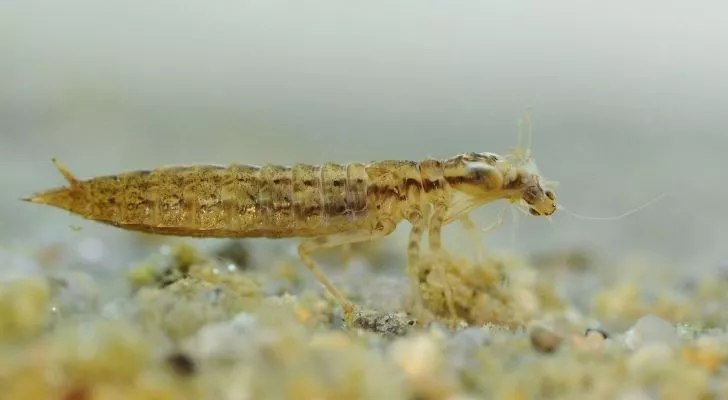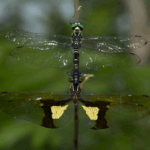Here are some interesting facts about dragonfly larvae, also known as nymphs or naiads:
The Food Chain
Unlike many common garden insects, dragonflies are carnivores, meaning they feed on other creatures. They feed on insects, fish, tadpoles, and other tiny creatures during the different stages of its life. As a nymph, it feeds on mosquito larvae, other aquatic insects, tadpoles, tiny fish, and other aquatic creatures. Adult dragonflies feed on insects caught in the air. They eat mosquitoes, biting flies, mayflies, and other insects.
Dragonfly Life Cycle
Dragonflies spend most of their lives as nymphs (larval form) in the water, sometimes for as long as 5 years. Eventually, the nymph will crawl out of the water and shed its skin to become an adult dragonfly. The adult dragonfly stage of its life is much shorter, sometimes only a few months or a year.
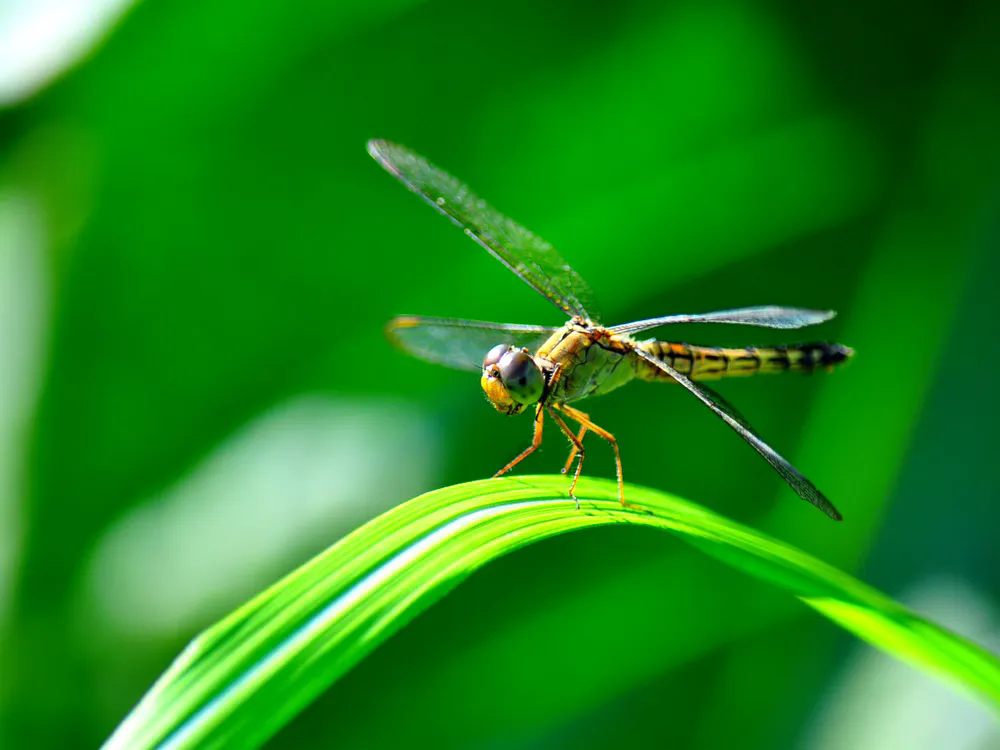
Key Highlights
- Dragonfly larvae are aquatic insects commonly known as nymphs.
- They go through a larval stage before transforming into adult dragonflies.
- Nymphs have unique physical characteristics, including large eyes and wing buds.
- Their respiratory system is adapted for underwater life, with internal gills located in their abdomen.
- Dragonfly larvae are ambush predators and feed on a variety of prey, including mosquito larvae.
- They play an important role in their ecosystem as top predators and indicators of healthy water bodies.
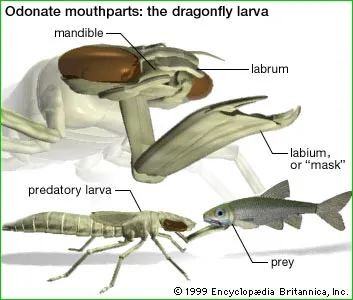
Introduction
Dragonflies are fascinating creatures that have captivated humans for centuries with their vibrant colors and incredible flying abilities. However, not many people are aware of the intriguing life cycle of these creatures, especially during their larval stage. Dragonfly larvae, also known as nymphs, are aquatic insects that spend most of their lives below the water surface. In this blog, we will explore the unique and fascinating facts about dragonfly larvae.
Different species of dragonfly larvae live in different water microhabitats. Some cling onto water plants floating on the water surface, some lay camouflaged among leaf litter at the bottom, while some of the rarer species in our forests even burrow into the sand beds of stream. No matter what type of water habitats they live the water must be clean and unpolluted.
They are amazing aquatic hunters
Just like their parents, the larvae are fully carnivorous. They are fierce predators of any aquatic animals they can catch. Water insects like water beetles and mosquito larvae; worms; tadpoles; and even small fishes are part of their diet. Dragonfly larvae have a unique way of catching their prey. Imagine your lower jaw is flexible and extendable, and is equipped with fearsome hooks and sharp teeth.
When a prey swims past, this lower jaw will shoot out with lightning speed to capture and retrieve it for consumption. So in this way, dragonfly larvae can stalk and ambush prey efficiently. Thus dragonfly larvae are one of the top predators in an aquatic insect food-chain.
Growth habits
Like other insects, dragonfly larvae grow by moulting, becoming bigger with each moult. Depending on the species, a larva goes through 10 to 12 rounds of moulting process. Larvae of different species grow at different rates which is in turn dependent on factors like food availability, habitats and climate. In Singapore, larvae of most common species take about six months to a year to grow.
In countries where there are different seasons, dragonfly larvae will stop growing during winter and enter a state similar to hibernation. Only in the warmer months of spring and summer will they resume growth. In situations like this, scientists have found larvae as old as six years.
Maturing into adult dragonflies
Once ready to emerge into adult dragonflies, the larvae will climb out of the water, perhaps onto a water plant or half-submerged twig. By then they would have started breathing air.
Slowly, adult dragonflies will emerge. The process is similar to how a butterfly emerges from a caterpillar pupa. As the dragonfly pumps bodily fluids throughout its body, it will expand and the wings will harden. After a few hours, a complete adult dragonfly is formed and ready for flight. Once the adult flies away, all that is left is the empty skin hanging onto the water plant. A keen observer can sometimes spot these empty skins at a pond.
The Secret Life Of Dragonfly Larvae
Adult dragonflies – colourful, vibrant and energetic. They invoke wonder and joy for many nature-lovers visiting a wetland habitat. Dragonflies are masters of flight and skill at capturing prey in the air. If eagles, hawks and falcons are the pinnacle of predatory skills among birds, then dragonflies must surely be the insect equivalent. While adult dragonflies always leave an indelible impression, very few people know or appreciate the larvae. Living hidden below the water surface, dragonfly larvae (also known as nymphs) remain unseen and mysterious. Let us now unveil their underwater secrets.
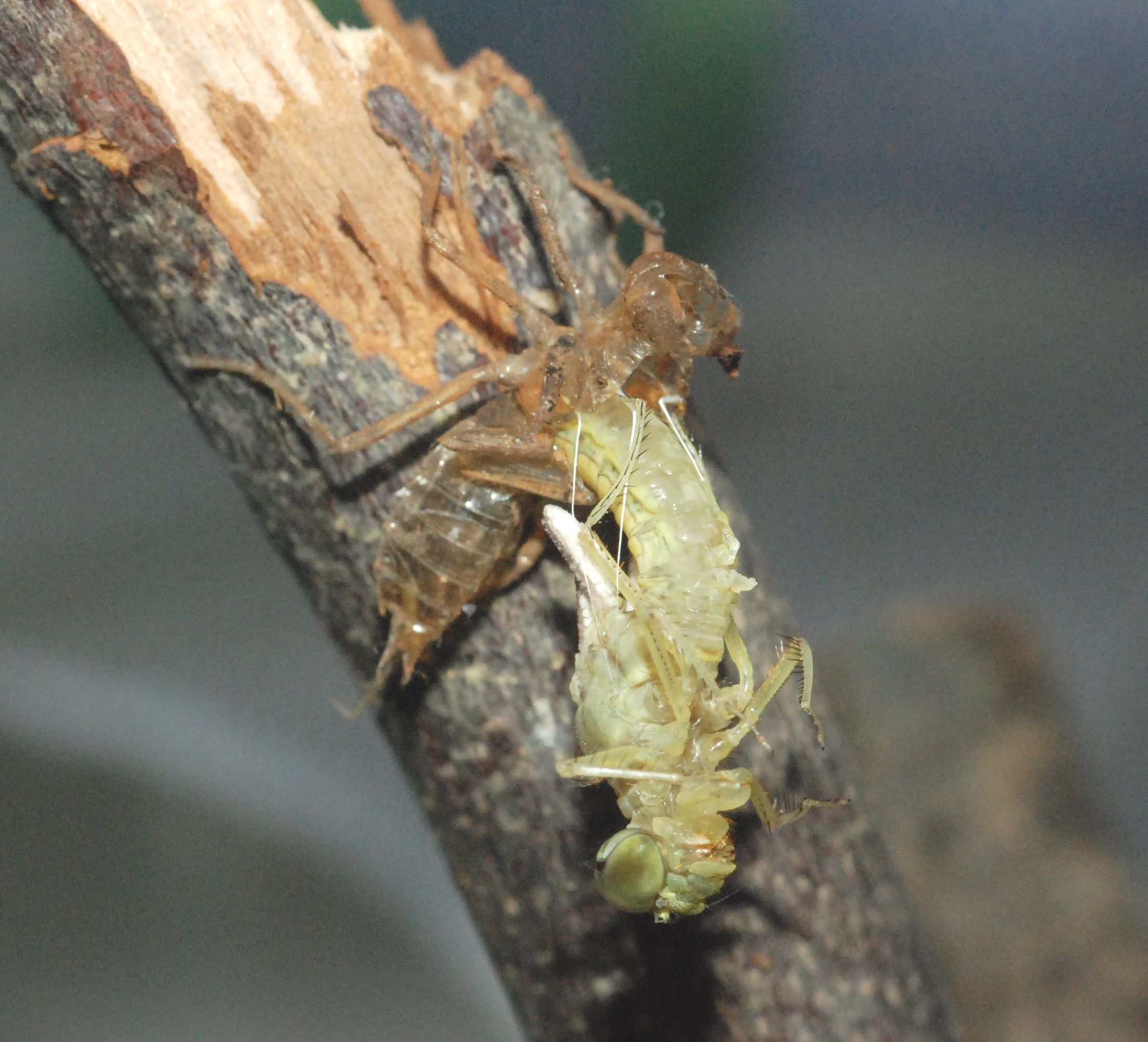
An introduction to dragonfly larvae
Dragonfly larvae require water to survive, so female adults are always searching for water habitats such as ponds, streams and swamps to lay their eggs. The eggs are laid directly into or close to water. Once hatched, the larvae adopt an aquatic lifestyle very different from their parents. Some dragonfly larvae appear squat while the bigger ones are longish and robust.
The larvae of the damselfly, which is related to dragonflies, are mostly slender and elongated with leaf-like appendages known as caudal lamellae. These appendages function essentially as external gills. All larvae are able to breathe by sucking water into their abdomens and through internal gills. A larva can also eject the water forcefully to propel themselves for a quick escape whenever necessary.
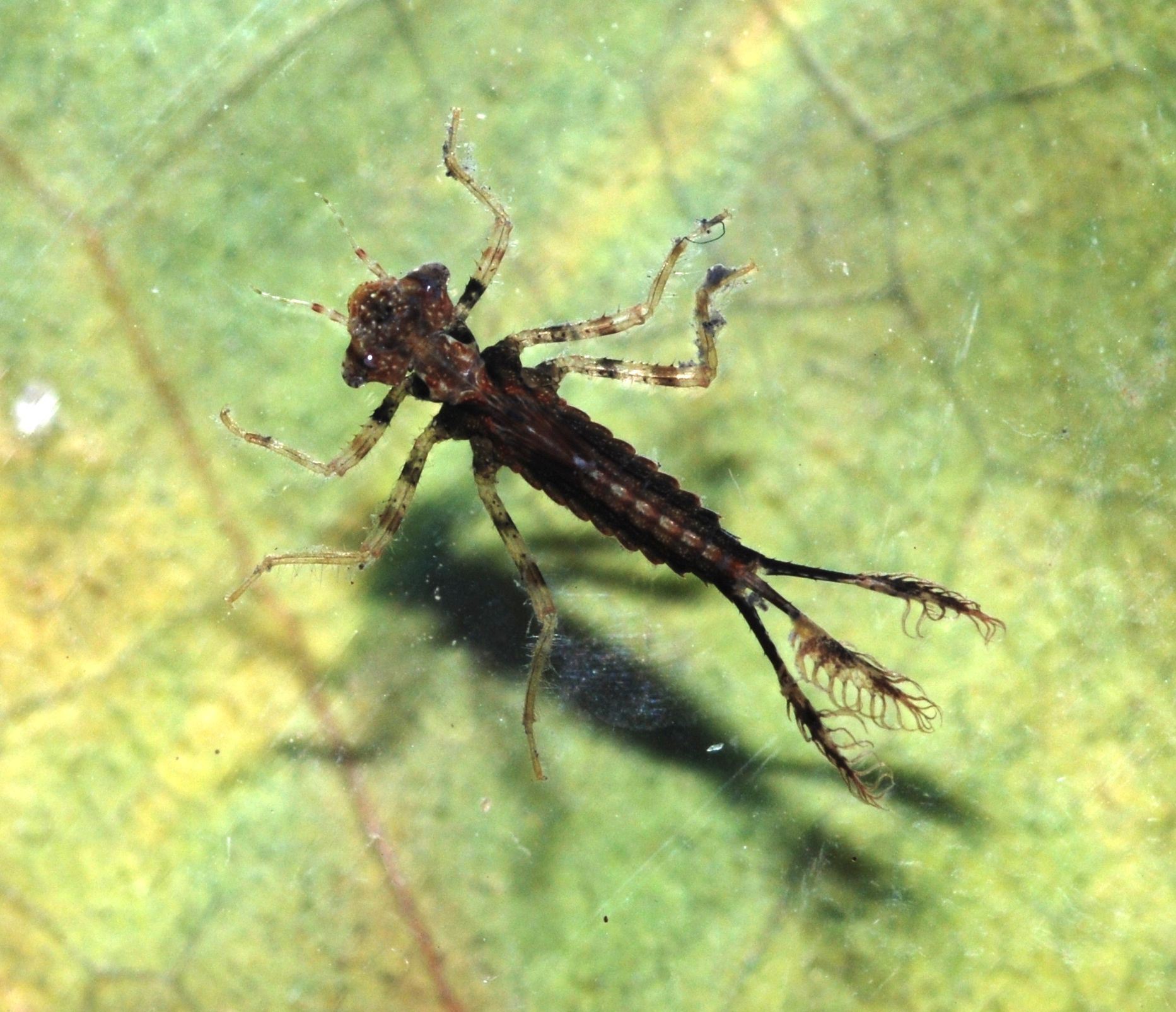
During their larval stage, dragonfly nymphs live in various aquatic habitats, including ponds, streams, and swamps. They are highly adaptable and can be found in both still and flowing waters. These nymphs are voracious predators, feeding on a wide range of prey such as mosquito larvae, small fish, tadpoles, and other aquatic insects. They are known for their ambush hunting strategy, lying in wait for their prey and striking with lightning speed using their extendable lower jaw.
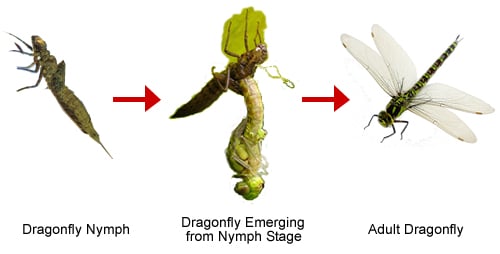
Understanding Dragonfly Larvae
Dragonfly larvae belong to the order Odonata, which includes both dragonflies and damselflies. They go through a larval stage called nymph before transforming into adults. Different species of dragonflies have different preferences for their aquatic habitats. Some prefer stagnant water bodies like ponds and marshes, while others thrive in fast-flowing streams and rivers. The larval stage is crucial for their development and growth, and it can last from several months to several years, depending on the species and environmental conditions.
The Aquatic Life of Dragonfly Nymphs
Dragonfly nymphs are perfectly adapted to their aquatic lifestyle. They have elongated bodies with six legs and are equipped with various structures that help them navigate through water. These nymphs can be found clinging to water plants, hiding among leaf litter, or burrowing into the sand beds of streams. They are excellent swimmers and can move quickly through the water using their abdomen and legs. Dragonfly nymphs rely on water plants for shelter and as a source of food. They often camouflage themselves among the plants and wait for their prey to come near. This makes them effective ambush predators, capable of capturing and consuming a wide range of small insects and invertebrates.
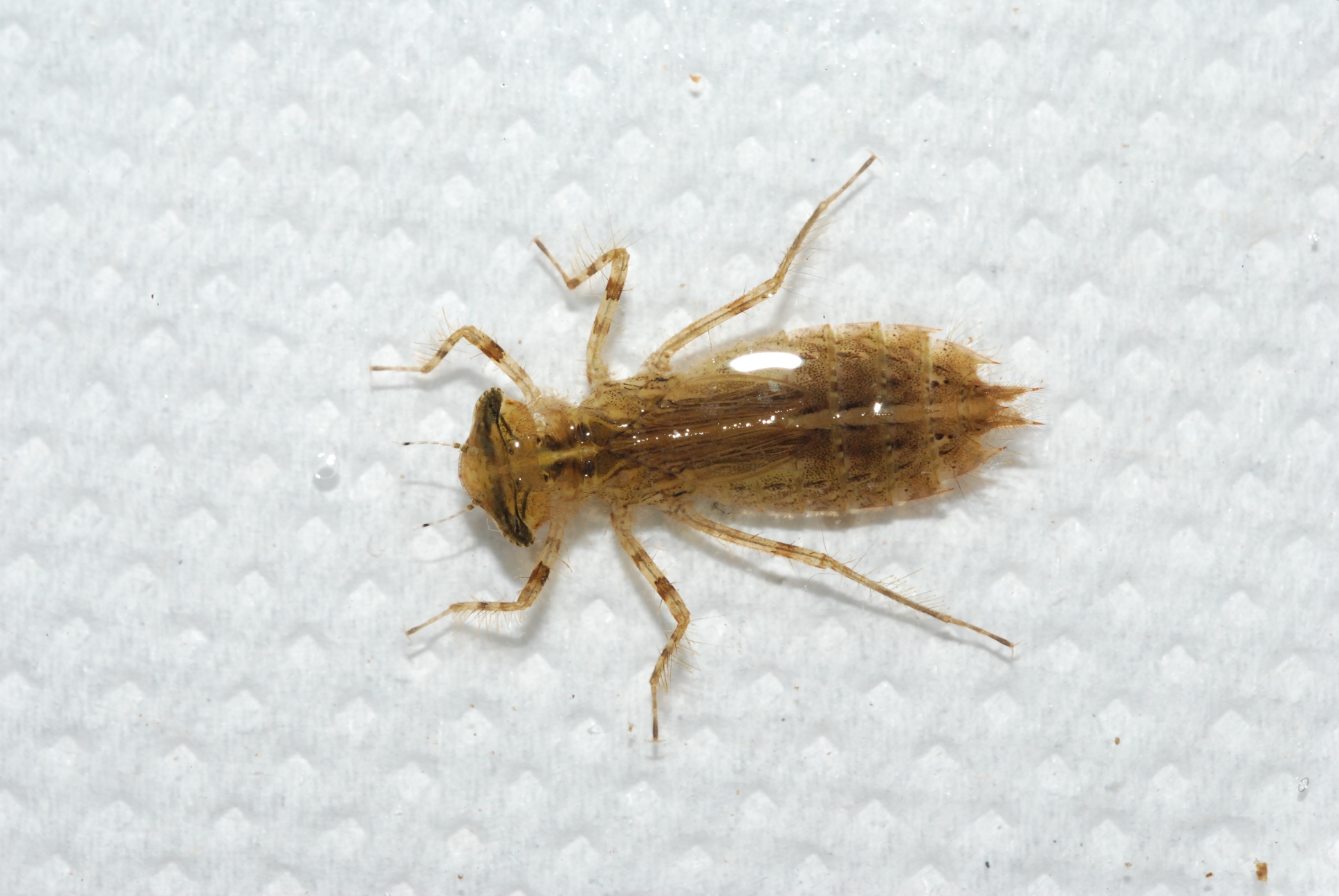
Physical Characteristics: From Large Eyes to Wing Buds
Dragonfly larvae possess several unique physical characteristics that distinguish them from their adult counterparts. These adaptations enable them to thrive in their aquatic environment and prepare them for their eventual transformation into adult dragonflies. Here are some key physical characteristics of dragonfly larvae:
- Large Eyes: Dragonfly larvae have large, bulging eyes that occupy most of their head. This allows them to have a wide field of vision and detect movement in their surroundings.
- Wing Buds: Even in their larval stage, dragonfly nymphs develop small wing buds that will eventually grow into the intricate wings of adult dragonflies.
- Larval Stage: Dragonfly larvae have elongated bodies with six legs and a segmented abdomen. They have a unique respiratory system that allows them to extract oxygen from the water.
The Unique Respiratory System of Dragonfly Larvae
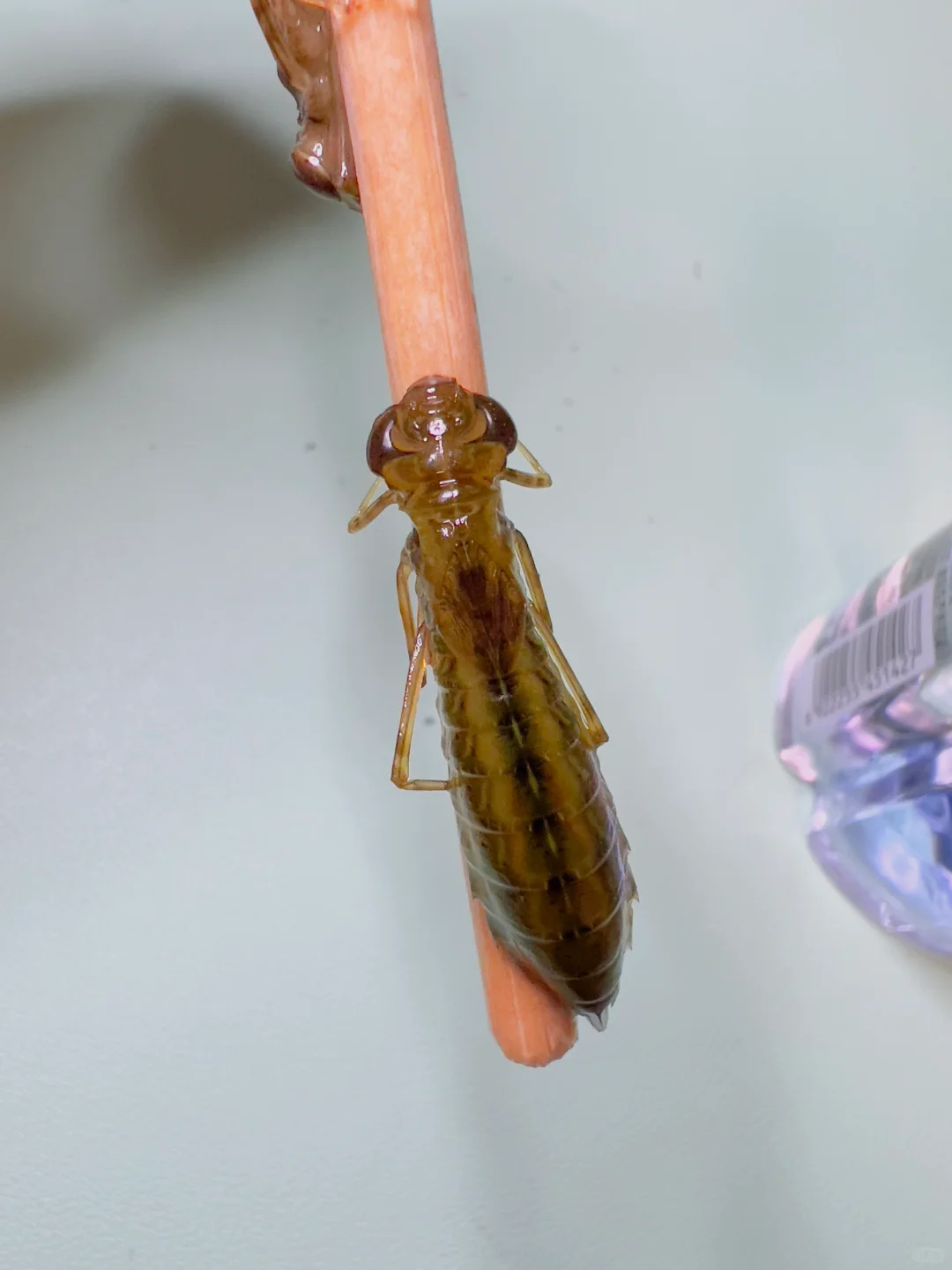
One of the most fascinating aspects of dragonfly larvae is their unique respiratory system. Unlike adult dragonflies, which breathe through their spiracles located on their abdomen, nymphs have a specialized structure called internal gills. These gills are located inside their rectum, which is a part of their abdomen. The nymphs draw water into their abdomen, allowing the oxygen to be absorbed by the gills. They can also forcibly expel water from their abdomen, which propels them forward in a form of jet propulsion.
Breathing Through the Hind End: A Closer Look
Dragonfly larvae have a unique adaptation for breathing underwater. Instead of breathing through gills located on the sides of their body like some other aquatic insects, dragonfly nymphs have internal gills located inside their rectum. This means that they breathe through their hind end. The tip of their abdomen is equipped with specialized structures that allow them to draw water into their body and extract oxygen from it. This process is facilitated by muscular contractions and movements of the abdomen. The nymphs can also expel water forcefully from their rectum, which helps them move and escape from predators.
How Gills Inside the Rectum Differentiate Them from Damselflies
Dragonfly larvae’s unique respiratory system sets them apart from their close relatives, the damselflies. While both dragonfly and damselfly nymphs are aquatic and have gills, the location of these gills differs. Damselfly nymphs have external gills located at the end of their abdomen, which resemble leaf-like structures. In contrast, dragonfly nymphs have internal gills inside their rectum. This difference in gill placement reflects the evolutionary adaptations of these two groups of insects to their respective aquatic habitats. Damselfly nymphs are typically found in slower-moving or stagnant waters, where external gills are more effective in extracting oxygen. Dragonfly nymphs, on the other hand, inhabit a wider range of aquatic environments, including fast-flowing streams and rivers, where internal gills offer greater protection and efficiency.
The Diet and Hunting Techniques of Dragonfly Larvae
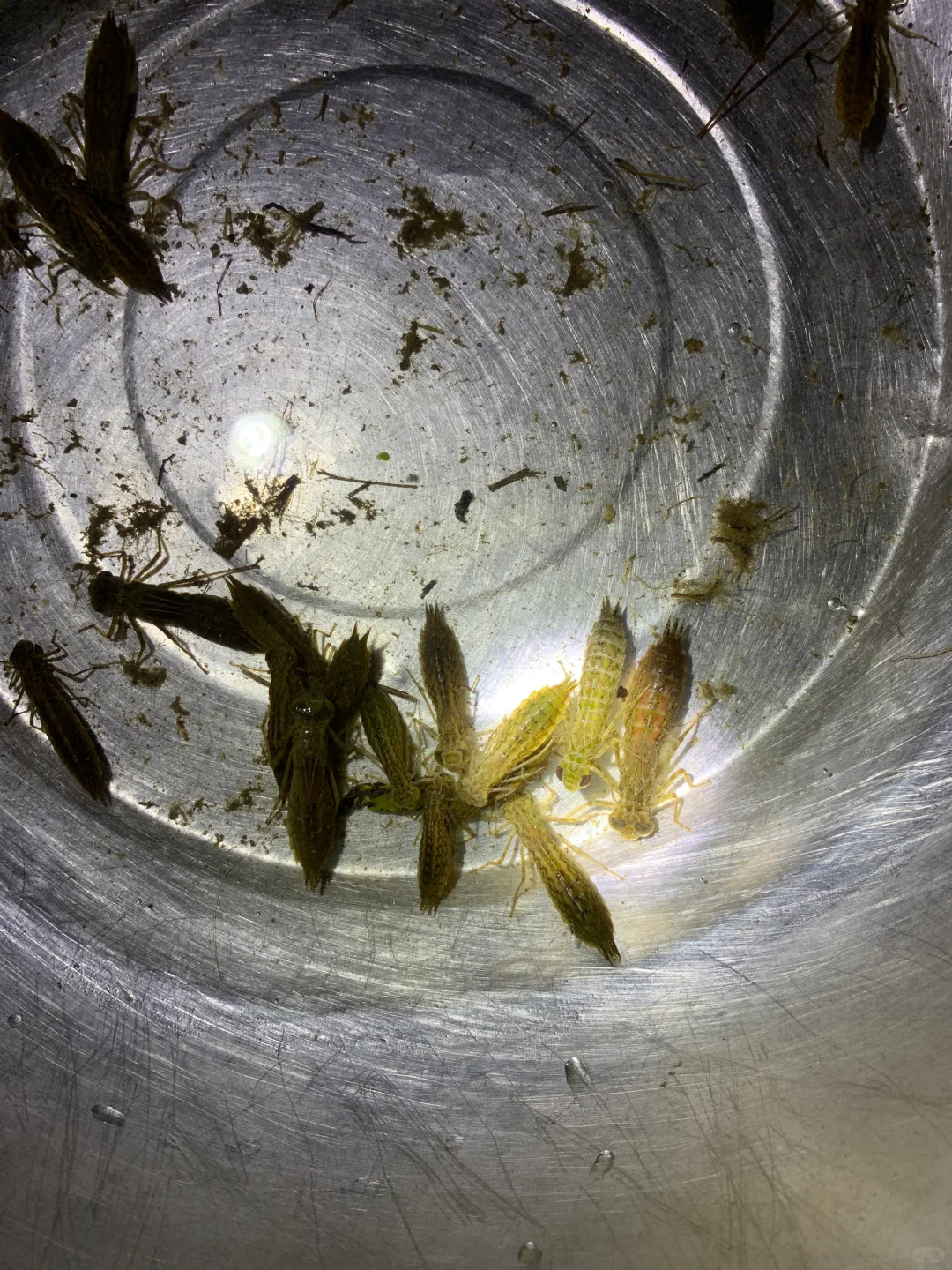
Dragonfly larvae are voracious predators and play a crucial role in controlling the population of small aquatic insects. They have a diverse diet and feed on a wide range of prey, including mosquito larvae, small fish, tadpoles, and other aquatic invertebrates. Dragonfly nymphs are known as ambush predators, using their camouflage and stealth to capture their prey. They lie in wait among aquatic vegetation, motionless and disguised, until an unsuspecting prey comes within striking distance. When the moment is right, the nymphs extend their lower jaw with lightning speed, capturing their prey and pulling it towards their mouthparts for consumption.
What Do Dragonfly Larvae Eat?
Dragonfly larvae have a diverse diet that includes a variety of smaller aquatic creatures. They are opportunistic predators and will consume any prey that comes within their reach. Some of the common prey items for dragonfly larvae include mosquito larvae, small fish, tadpoles, water beetles, and aquatic worms. They are known to be effective hunters and can consume prey that is up to 60 percent of their own weight. This makes them important predators in their ecosystem, helping to control the population of smaller organisms and maintaining the balance of the aquatic food chain.
Ambush Predators: The Hunting Strategy of Nymphs
Dragonfly larvae have a unique hunting strategy that makes them highly effective ambush predators. They rely on their excellent camouflage and stealth to blend in with their surroundings, waiting patiently for their prey to come within striking distance. Once the prey is within range, the nymphs extend their lower jaw, which is equipped with sharp hooks and teeth, with lightning speed. They snatch their prey and pull it towards their mouthparts for consumption. This hunting strategy allows dragonfly larvae to efficiently capture their prey and ensures a steady supply of food for their growth and development.
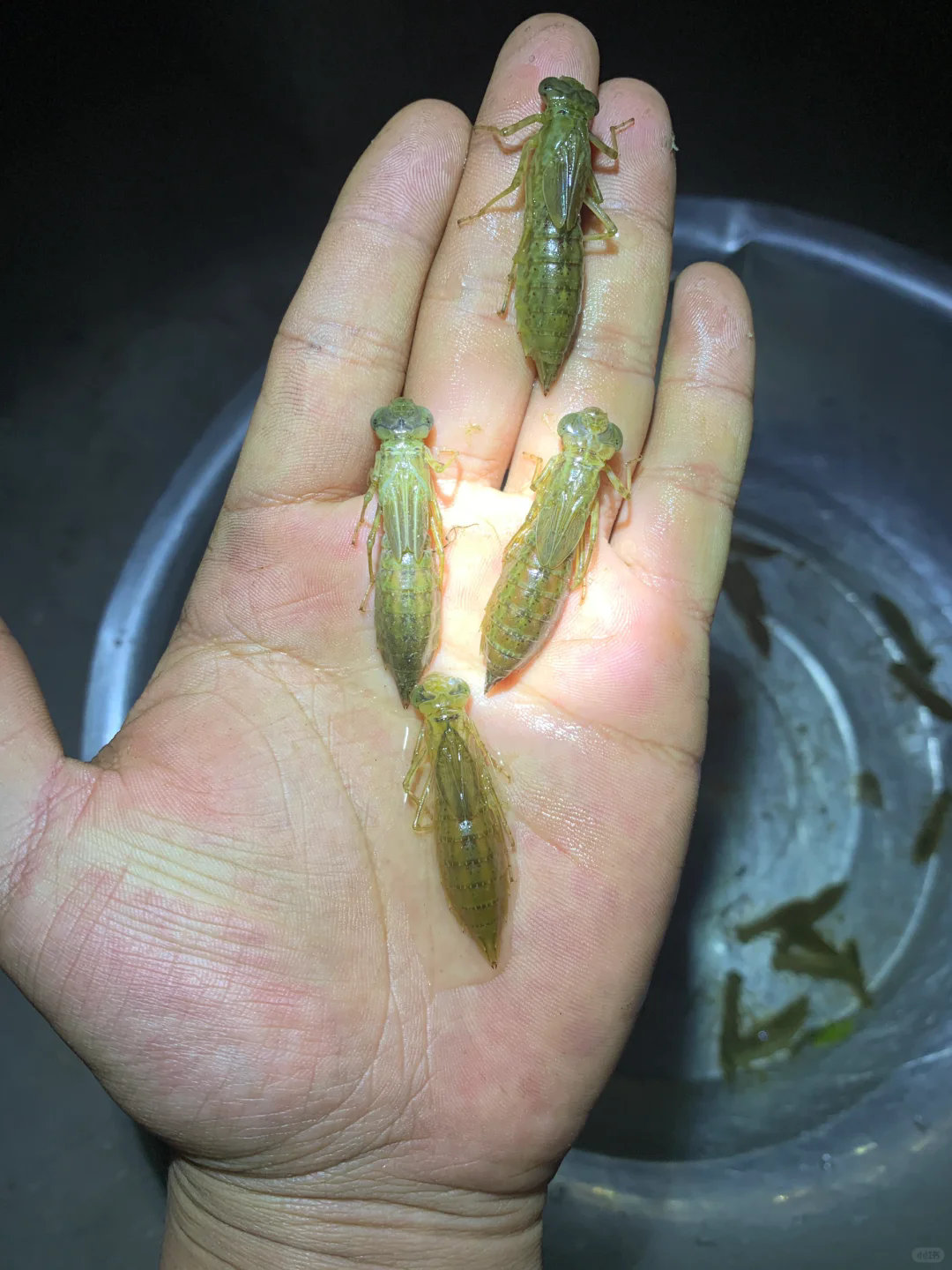
Growth and Development Stages
Dragonfly larvae go through several stages of growth and development before they eventually transform into adult dragonflies. The larval stage is the longest stage in their life cycle and can last from several months to several years, depending on the species. During this stage, the nymphs go through several molts, shedding their old exoskeleton and growing a new one. Each molt marks a stage of growth and development, until the nymph reaches its final instar, or stage. Once the nymph has completed its final instar, it is ready to undergo metamorphosis and emerge as an adult dragonfly.
From Egg to Nymph: The Early Life Stages
The life cycle of a dragonfly begins with the egg stage. Female dragonflies lay their eggs in or near water, ensuring the young nymphs have immediate access to their aquatic habitat. The eggs hatch into nymphs, which spend the majority of their lives in the larval stage. During this stage, the nymphs live underwater, feeding and growing. They go through several molts, shedding their exoskeletons as they grow larger. Each molt marks a new instar, or stage, of development. The nymphs continue to feed and grow until they reach their final instar, at which point they are ready to undergo metamorphosis and transform into adult dragonflies.
The Transformation: Preparing for Emergence
As the nymph reaches its final instar, it begins to prepare for its transformation into an adult dragonfly. This process, known as emergence, is a crucial stage in the life cycle. The nymph climbs out of the water and finds a suitable surface to undergo metamorphosis. It then sheds its exoskeleton for the final time and gradually transforms into a young adult dragonfly. During this process, the wings expand and harden, and the colors and patterns of the adult dragonfly become more vibrant. The young adult dragonfly spends some time away from water, allowing its wings to fully develop and strengthen before it takes its first flight. Once it is fully mature and capable of sustained flight, the dragonfly returns to the water to breed and continue the life cycle.
The Role of Dragonfly Larvae in Their Ecosystem
Dragonfly larvae play a vital role in the health and balance of aquatic ecosystems. As top predators in their environment, they help regulate the population of smaller organisms, including mosquito larvae and other aquatic insects. By controlling the population of these organisms, dragonfly larvae contribute to the overall health and stability of the ecosystem. Additionally, the presence of dragonfly larvae in a water body is often seen as an indication of good water quality. Their presence indicates that the water is clean, well-oxygenated, and free from pollutants, making them important indicators of a healthy aquatic environment.
Predator and Prey: Balancing the Aquatic Ecosystem
Dragonfly larvae are considered top predators in the aquatic ecosystem. They play a crucial role in maintaining the balance of the ecosystem by controlling the population of their prey. They are voracious predators that feed on a variety of small aquatic animals, including insect larvae, crustaceans, worms, tadpoles, and even small fish.
By feeding on these prey species, dragonfly larvae help regulate their populations and prevent them from becoming overabundant. This, in turn, helps maintain the overall health and stability of the aquatic ecosystem. The presence of dragonfly larvae in a water body is often an indicator of a healthy ecosystem with a diverse range of prey species. Their predatory behavior also helps in controlling the spread of disease among aquatic organisms.
Overall, dragonfly larvae play a vital role in balancing the aquatic ecosystem by acting as top predators and regulating the population of their prey species.
Indicators of Healthy Water Bodies
Dragonfly larvae are not only fascinating creatures but also serve as indicators of healthy water bodies. The presence of dragonfly larvae in a body of water is a sign of good water quality and a healthy aquatic habitat. Different species of dragonflies have specific habitat requirements, and their presence or absence can provide valuable information about the condition of the ecosystem.
Dragonfly larvae require clean and unpolluted water to survive. They are sensitive to changes in water quality and are unable to survive in polluted or degraded habitats. Therefore, the presence of a diverse range of dragonfly species in an aquatic habitat indicates that the water body is free from pollutants and provides suitable conditions for their development.
Monitoring the presence and abundance of dragonfly larvae can help researchers and conservationists assess the health of water bodies and identify areas that require conservation efforts. Protecting and preserving the habitats of dragonfly larvae is essential for maintaining healthy aquatic ecosystems.
Conservation Challenges Facing Dragonfly Larvae
Conserving dragonfly larvae and their habitats face several challenges. One of the main threats to their survival is the degradation and loss of aquatic habitats. Pollution from industrial and agricultural activities, habitat destruction due to urban development, and climate change are all contributing factors to the decline in suitable habitats for dragonfly larvae.
Another challenge is the introduction of non-native species, such as invasive plants and fish, which can disrupt the natural balance of the ecosystem and negatively impact the survival of native dragonfly larvae.
Conservation efforts are focused on protecting and restoring aquatic habitats, creating buffer zones around water bodies, and raising awareness about the importance of dragonfly larvae and their role in maintaining healthy ecosystems. Individuals can also contribute to conservation efforts by supporting local conservation organizations, reducing pollution, and preserving natural habitats.
Threats to Aquatic Habitats
Aquatic habitats that are crucial for the survival of dragonfly larvae are facing various threats. One of the main threats is pollution from human activities such as industrial and agricultural runoff, which can introduce harmful chemicals and pollutants into the water. These pollutants can disrupt the delicate balance of the ecosystem and negatively impact the survival of dragonfly larvae.
Habitat loss and degradation due to urban development and land-use changes are also significant threats. The destruction of wetlands and the alteration of natural water flow patterns can disrupt the availability of suitable habitats for dragonfly larvae.
Invasive species, both plants and animals, pose another threat to aquatic habitats. Invasive plants can outcompete native vegetation and change the structure of the habitat, while invasive fish species can prey on dragonfly larvae and disrupt the natural food chain.
Efforts to protect and restore aquatic habitats are crucial for ensuring the survival of dragonfly larvae and maintaining healthy ecosystems.
Conservation Efforts and How You Can Help
Conservation efforts to protect dragonfly larvae and their habitats are underway worldwide. These efforts focus on preserving and restoring aquatic habitats, raising awareness about the importance of dragonfly larvae, and promoting sustainable practices to reduce pollution and habitat destruction.
Conservation organizations work to identify important habitats for dragonfly larvae and advocate for their protection. They also engage in habitat restoration projects, including the creation of wetlands and the removal of invasive species.
Individuals can contribute to conservation efforts by supporting these organizations and participating in citizen science projects to monitor dragonfly larvae populations. By reducing pollution and conserving water, individuals can also help create a healthier environment for dragonfly larvae and other aquatic organisms.
Together, these conservation efforts can help ensure the survival of dragonfly larvae and maintain the delicate balance of aquatic ecosystems.
Dragonfly larvae are truly fascinating creatures, playing a vital role in aquatic ecosystems. Their unique respiratory system and hunting techniques showcase their adaptive nature. Understanding their growth stages and ecosystem significance sheds light on their importance. However, conservation challenges threaten their habitat. By learning about threats and supporting conservation efforts, we can safeguard these incredible larvae for future generations. Explore more about dragonfly larvae to appreciate their contribution to the environment.
Frequently Asked Questions
How Long Do Dragonfly Larvae Live?
The lifespan of dragonfly larvae varies depending on the species and environmental conditions. On average, dragonfly larvae spend several months to a few years in the larval stage before undergoing metamorphosis and emerging as adult dragonflies.
Can Dragonfly Larvae Be Found in Any Water Body?
Dragonfly larvae can be found in a wide range of aquatic habitats, including ponds, lakes, rivers, streams, swamps, and even temporary water bodies. They inhabit both still and flowing water and can be found at various depths, from the water’s surface to the bottom.
What Happens During the Dragonfly Larvae’s Emergence?
During the emergence of dragonfly larvae, they crawl out of the water and attach themselves to a support, such as a plant stem. They shed their larval skin, known as exuvia, and gradually expand their wings and body to become adult dragonflies. This transformation marks the end of their nymph stage.
Do Dragonfly Larvae Have Predators?
Yes, dragonfly larvae have predators. They are preyed upon by various aquatic animals, including small fish, frogs, and spiders. These predators play an important role in the natural food chain and help regulate the population of dragonfly larvae in aquatic habitats.
How Can We Identify Different Species of Dragonfly Larvae?
Different species of dragonfly larvae can be identified based on their physical characteristics, such as body shape, size, and coloration. Each species has unique traits that can help distinguish them from other dragonfly larvae. Consult field guides or online resources to learn more about the specific characteristics of different dragonfly species.

